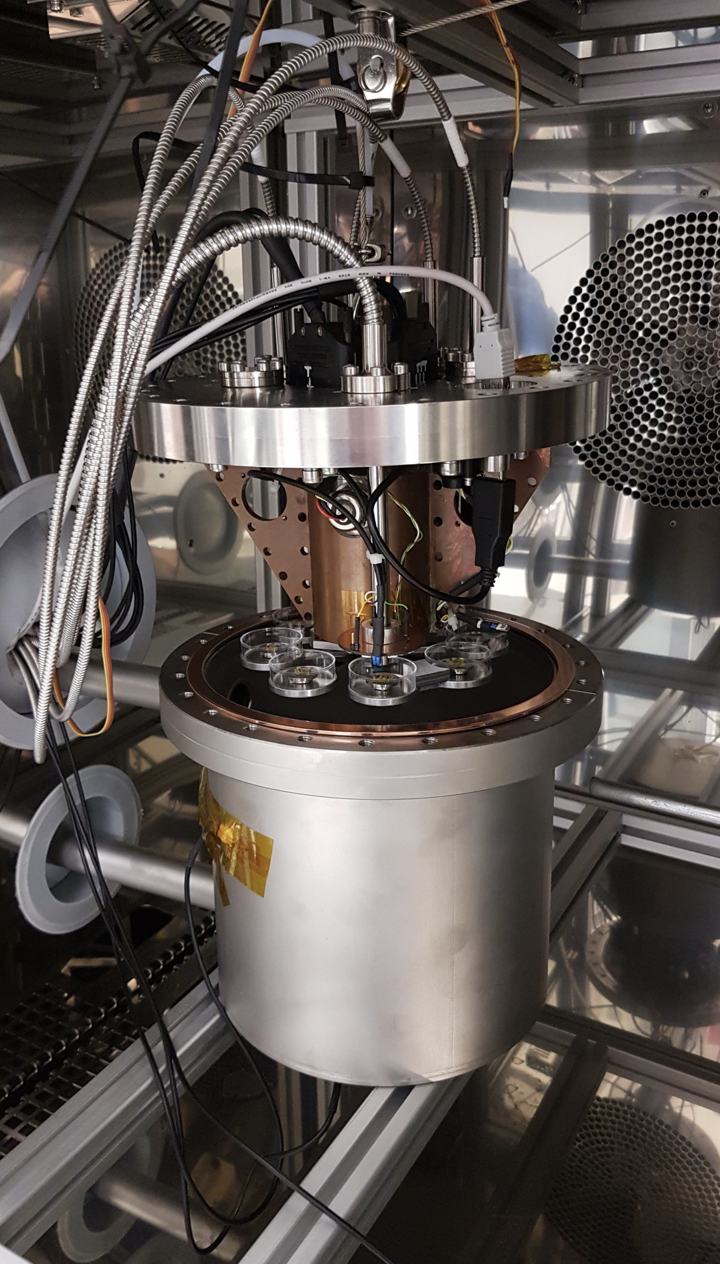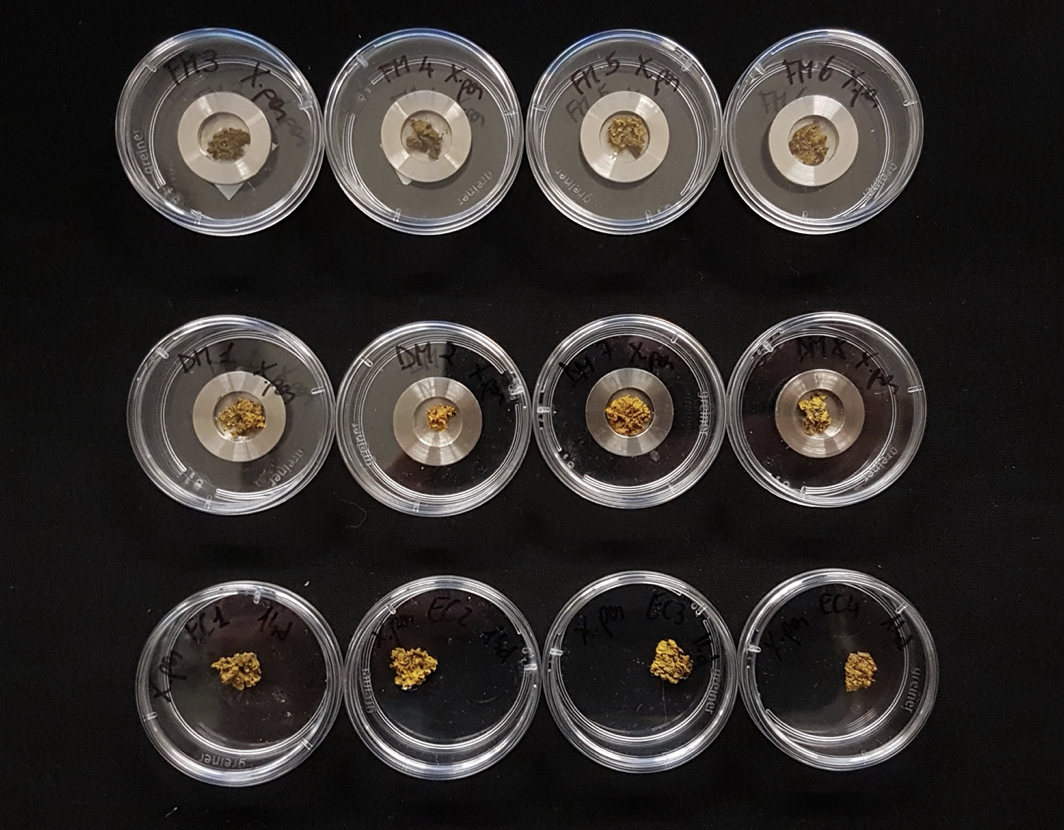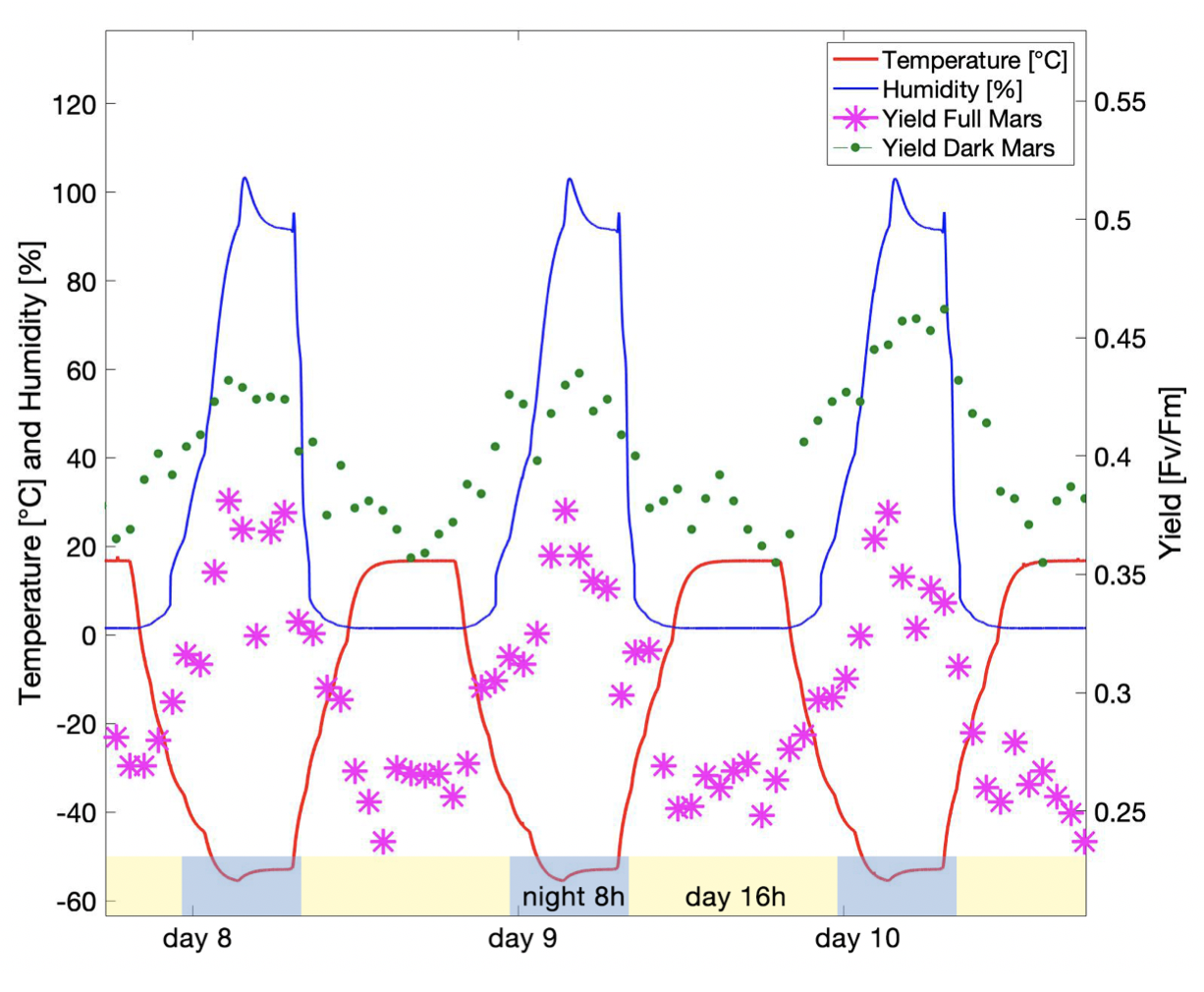Survivability of Xanthoria parietina in simulated Mars conditions for 30 days
- 1Department of Biology, University of Florence, Via La Pira 4, 50121 Florence, Italy.
- 2LESIA-Observatoire de Paris, Université PSL, CNRS, Sorbonne Université, Université de Paris, 5 place Jules Janssen, 92190 Meudon, France.
- 3INAF-Astrophysical Observatory of Arcetri, Largo E. Fermi, 5, 50125 Florence, Italy.
- 4Planetary Laboratories Department, German Aerospace Center (DLR), Institute of Planetary Research, Ruthefordstraße 2, 12489 Berlin, Germany.
- 5MUSC, German Aerospace Center (DLR), Space Operations and Astronaut Training, Linder Höhe, 51147 Cologne, Germany.
Introduction
One of the main topics of astrobiology research is the study of life’s limits in stressful environments. The study of organisms in extreme environments might give an indication about their potential adaptive plasticity, in the view of a climate change perspective, the terrestrial geological past and future scenarios, as well as extra-terrestrial habitats such as Mars’ surface. Lichens - with their excellent adaptive abilities - represents an extremely interesting case study. Several astrobiological studies involving lichens - that are symbiotic association between a fungus and an alga and/or acyanobacterium - proved the ability of these organisms to resist and thrive in extreme environments such as space and Mars’ surface simulated conditions [1, 2]. We have already tested the lichen species Xanthoria parietina (L.) Th. Fr. in simulated space conditions, that was able to survive and to reactivate after exposure [3]. X. parietina is a cosmopolitan foliose lichen that grows on barks and rocks [4]. This species shows high tolerance to air pollutants, heavy metals, and resistance to UV-radiation thanks to the shielding properties of the secondary metabolite parietin [5, 6]. Here we present a new study on the survival of X. parietina under simulated Mars conditions performed at the Mars Simulation Facility of the DLR Institute of Planetary Research in Berlin (Fig.1).

Figure 1 - Mars Simulation Facility at DLR with the opened experiment chamber.
Methods
The aim of the study was to assess the survivability of Xanthoria parietina under simulated Mars conditions for 30 days [7, 8]. Inside the Mars simulation chamber, eight samples (Fig.2) were exposed to the simulated atmospheric conditions of Mars of which four were fully UV-irradiated with day-night cycles (FM, Full-Mars) and the other four kept in darkness (DM, Dark-Mars). A three-gas mixture of 95% CO2, 4% N2 and 1% O2 was used as best approximation of Mars-like atmospheric conditions, with a constant pressure of 600Pa. Temperature and humidity were subjected to day-night cycles, reaching during daytime 15°C and 0% RH, and during night -55°C and 100% RH (Fig.3) according to Martian thermophysical conditions at mid-latitudes. UV-radiation for FM samples was simulated using a Xenon UV-lamp (spectral range 200 nm – 2200 nm) that was automatically turned on for 16 h (day) and turned off for 8 h (night) daily. The total average radiation dose for FM was 2452.32 J/cm2 and the average instantaneous irradiance on the sample spots was 14,2 W/m2 [9]. Four other samples (Fig.2) were kept in control conditions during the experiment, at the constant temperature of 25°C, daily wetted and 12h dark and 12h light (ca. 50 μmol m-2 s-1 PAR photons). Several analyses were carried out to study all the samples before, during and after the exposure to the extreme Mars conditions. In detail, this experiment was performed aiming:
- to monitor the lichen vitality through chlorophyll a fluorescence (FV/FM) as photosynthetic efficiency parameter, carrying out in situ and after treatment analyses,
- to evaluate the oxidative stress due to the extreme conditions, highlighting eventual changes in the lichen carotenoids’ Raman signatures,
- to verify eventual modifications in the infrared features (peak shifting) in the lichen FTIR reflectance spectrum possibly related to UV-photodegradation effects,
- to highlight possible variations in the lichen ultrastructure through TEM analysis.

Figure 2 - Xanthoria parietina samples ready for the experiment. First row (from above): full Mars samples, second row: dark Mars samples, third row: control samples.

Figure 3 - Detail of the day-night cycles of the simulated Mars conditions (temperature, red thick line; humidity, blue thin line) and fluorescence variation values for both the treatments (FM and DM).
Results
The results showed significant differences between FM and DM photosynthetic efficiency parameter during exposure to Mars environment, exhibiting FV/FM values correlated with temperature and humidity day-night cycles (Fig.3). The FV/FM recovery values showed significant differences between the treatments too, highlighting that FM conditions caused stronger effects on fluorescence values. Additional analyses show possible changes in the Raman and FTIR spectra of the irradiated samples with several features involved. Overall, Xanthoria parietina was able to survive to FM conditions, and for this reason it may be considered a candidate for long exposure in space and evaluations on the photodegradability of parietin in extreme conditions.
Reference
[1] Onofri, S., de la Torre, R., de Vera, J. P., Ott, S., Zucconi, L., Selbmann, L., Scalzi, G., Venkateswaran, K. J., Rabbow, E., Sánchez Iñigo, F. J., and Horneck, G. (2012). Survival of rock-colonizing organisms after 1.5 years in outer space. Astrobiology, 12(5), 508-516.
[2] De Vera, J. P., Möhlmann, D., Butina, F., Lorek, A., Wernecke, R., and Ott, S. (2010). Survival potential and photosynthetic activity of lichens under Mars-like conditions: a laboratory study. Astrobiology, 10(2), 215-227.
[3] Lorenz, C., Bianchi, E., Benesperi, R., Loppi, S., Papini, A., Poggiali, G., & Brucato, J. R. (2022). Survival of Xanthoria parietina in simulated space conditions: vitality assessment and spectroscopic analysis. International Journal of Astrobiology, 1-17.
[4] Nimis P.L., 2016. ITALIC - The Information System on Italian Lichens. Version 5.0. University of Trieste, Dept. of Biology, (http://dryades.units.it/italic), accessed on 2022, 05, 09. for all data contained in the taxon pages, including notes, descriptions, and ecological indicator values.
[5] Silberstein, L., Siegel, B., Siegel, S., Mukhtar, A., and Galun, M. (1996). Comparative Studies on Xanthoria parietina, a Pollution Resistant Lichen, and Ramalina duriaei, a Sensitive Species. I. Effects of Air Pollution on Physiological Processes. The Lichenologist, 28:355-365.
[6] Solhaug, K. A., and Gauslaa, Y. (1996). Parietin, a photoprotective secondary product of the lichen Xanthoria parietina. Oecologia, 108:412-418.
[7] Lorek, A., and Koncz, A. (2013). Simulation and measurement of extraterrestrial conditions for experiments on habitability with respect to Mars. In Habitability of Other Planets and Satellites (pp. 145-162). Springer, Dordrecht.
[8] De Vera, J. P., Schulze-Makuch, D., Khan, A., Lorek, A., Koncz, A., Möhlmann, D., and Spohn, T. (2014). Adaptation of an Antarctic lichen to Martian niche conditions can occur within 34 days. Planetary and Space Science, 98, 182-190.
[9] Cockell, C. S., Catling, D. C., Davis, W. L., Snook, K., Kepner, R. L., Lee, P., and McKay, C. P. (2000). The ultraviolet environment of Mars: biological implications past, present, and future. Icarus, 146(2), 343-359.
How to cite: Lorenz, C., Bianchi, E., Poggiali, G., Alemanno, G., Benesperi, R., Brucato, J. R., Garland, S., Helbert, J., Lorek, A., Maturilli, A., Papini, A., de Vera, J.-P., and Baqué, M.: Survivability of Xanthoria parietina in simulated Mars conditions for 30 days, Europlanet Science Congress 2022, Granada, Spain, 18–23 Sep 2022, EPSC2022-189, https://doi.org/10.5194/epsc2022-189, 2022.

